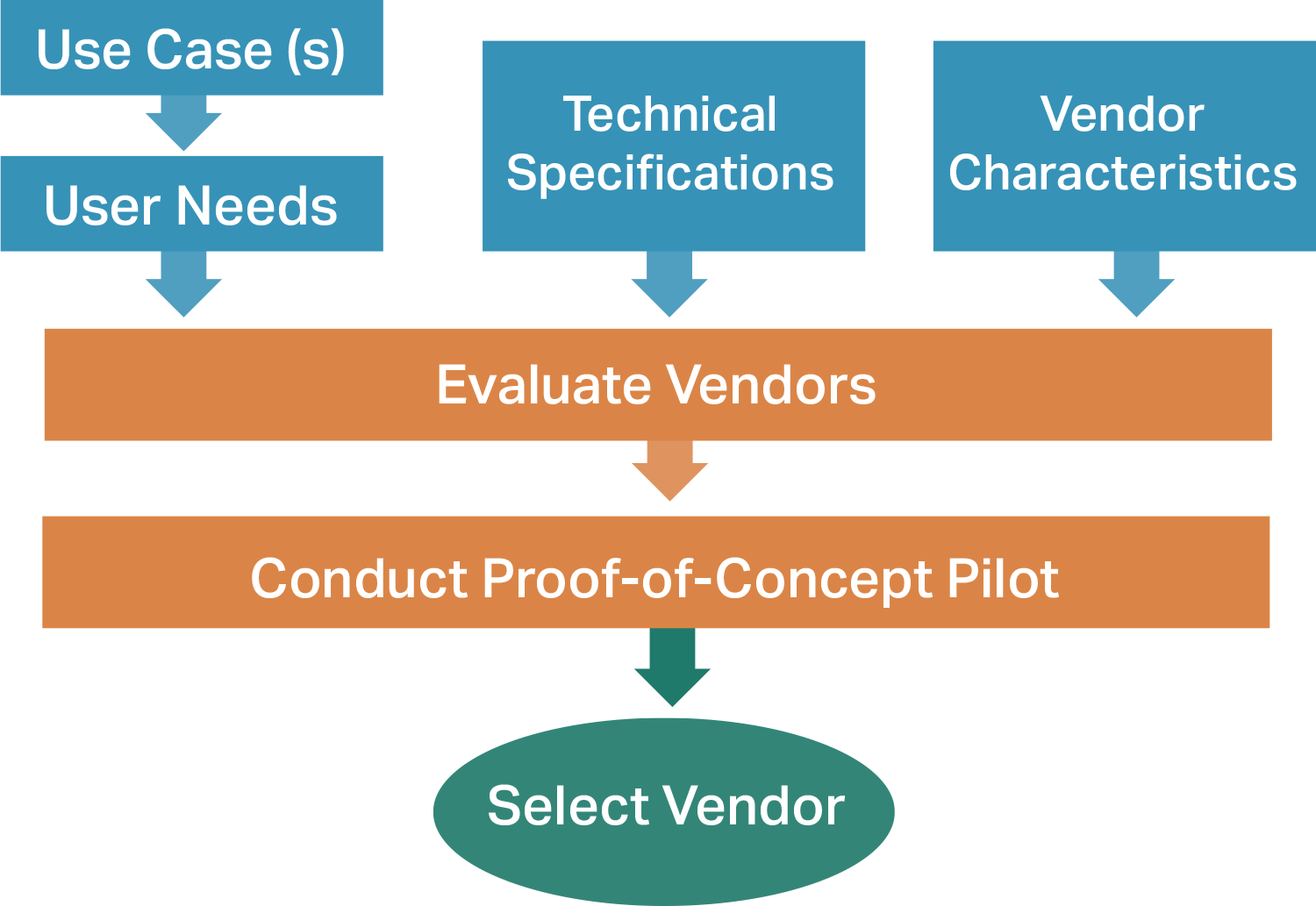Vendor Selection Process

User Needs
Features and functionality needed to deliver the telehealth service(s) according to the use case.
- Features - Your features should come from your clear understanding of the workflow and how the clinicians and allied health staff intend and desire to use the technology.
Technical Specification
Technical attributes (e.g., required interfaces, protocols) and quality attributes (e.g., security, scalability, usability, integrateability, and other “–ilities”).
- Interfaces - The ability to interface with your existing technologies (scheduling system, EMR, etc.) as defined by your workflow. Not every telehealth service needs an electronic interface with your EMR - design your workflow first.
- Standards - Obviously if the technology is generating or handling PHI (Protected Health Information), you need documentation on their compliance with HIPAA and, if applicable, FDA certification.
- Quality Attributes - What is their system architecture and how are they keeping the data secure? How are they ensuring a good user experience? What interfaces exist and to what extent are they implemented (PDF export vs. API interface vs. native integration).
Vendor Characteristics
Attributes such as company history, funding sources, revenue, growth, case studies (track record), founders & executive team, etc. Consider inquiring about:
- Company History - How was the the company founded? Did it grow out of an academic research, a subdivision of a larger company or the result of entrepreneurial spirit? This information can give you insight into how innovative the company may continue to be to allow you to grow with your evolving needs.
- Leadership - Who are the leaders? What is there track record, especially in healthcare? Is there any clinical leadership or is it solely business/ technical? Clinical leadership allows a company to balance its technical and business ambitions with the realities of healthcare and is a big plus.
- Funding - Is this a startup or a long-established company? Are they corporately funded or backed by venture capital? This information will give you some insight as to how aggressively they are trying to grow and achieve a high return for their investors.
- Financials - What is their growth rates - not just in terms of clients and “touched lives”, but also in terms of revenue. Some startups are launching many “free” pilots with numerous organizations to make their numbers and growth look good, but it may turn out a shell game. And 338% revenue growth sounds impressive, but is not much when going from $150,000 to $357,000. Sign a confidentiality agreement and get a real scoop on the numbers.
- Case Studies and References - Request case studies and talk to the clinical and technical leaders of those studies.





